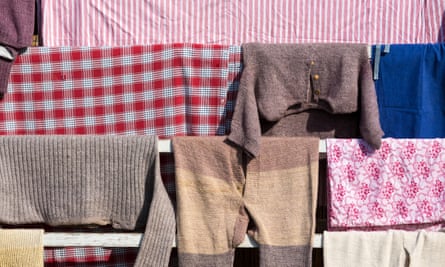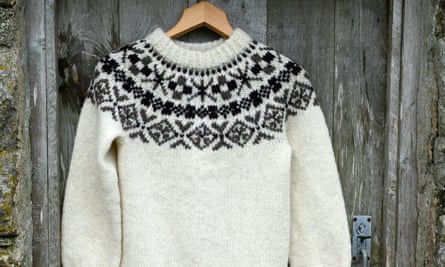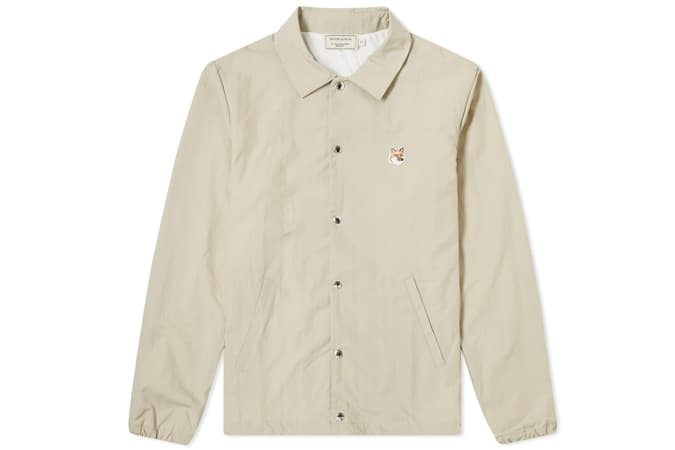
In the 12 months I’ve spent moving between Melbourne and Sydney, I’ve learned that Sydneysiders treat winter like it’s just for fun.
At this time of year, the difference is most apparent in the morning. In Sydney, I’m still walking to yoga in shorts. In Melbourne I’m waking up to frosted windows and clouds of mist, then reaching for my favourite knitwear – some of which I’ve had for years.
I love quality knitwear because with a bit of knowledge, a gentle steam and a once over with a garment shaver, it can look almost new again. Here’s some advice on how to choose knitwear that’s spun to last.
How does it feel?
If knitwear feels cheap and itchy, it probably is. Touch is an easy litmus test. Start by running the knit through your fingers to get a sense of its softness, then test it against a more sensitive area. The team behind traceable, Australian-milled wool brand Wolfgang Scout suggest your neck is “the best place to test … does it prickle or scratch?”
What is it made of?
David Giles-Kaye, cofounder of knitwear manufacturer Hatch + Make, recommends buying pure wool. “Wool has a natural spring to it, making it ideal in a knit. It also drapes well, resists sagging and if looked after, maintains its shape and fit for a long time.”
Pure wool is less common than blends, for several reasons. Some natural fibre blends like silk can add lustre and drape to a garment, say Wolfgang Scout, while cotton can give the garment a lighter feel.

Wool-synthetic blends tend to be more affordable, but Giles-Kaye says these products wind up costing more in the long run, for the planet if not the customer. “They are almost impossible to recycle,” he says. “They need more cleaning, so quickly start to look washed out and shabby and the synthetic microfibres constantly pollute the environment.”
“The main driver of these types of blends is to bring the price of the garment down,” he says. “It allows the use of lower-quality wool.”
Knitwear shoppers on a tight budget are better off looking for a pure wool knit secondhand than a blended knit new: it will cost less, and last longer.
Is it a good yarn?
Yarn, the threads a garment is knitted from, are a key indicator of quality.
Buyer and creative director of Sydney boutique Camargue, Harriet Sutherland, recommends looking very closely at the yarn: it will tell you how robust the knit is and whether or not it will catch easily. Put your fingers underneath a segment of the knit to look at the thickness and how densely it has been knitted – if the knit is loose, or the yarn is thin, you’ll be able to see your hand through it.
Plied yarns, where multiple yarns are twisted together in the opposite direction from which they were spun, are the best option. “Look for nice and tight knit construction with no frayed edges or loose yarns,” the managing director of Woolmark, John Roberts, suggests.

Pilling is an inevitable part of owning knitwear, due to the mixture of fibre lengths that go into creating a single yarn. But smoother, longer fibres are less likely to pill and if you remove any pills with a garment shaver, you are removing the shorter fibres that caused them, so pilling should reduce over time.
after newsletter promotion
Does it fit?
Although it may seem obvious, make sure you buy knitwear in the correct size. “Knitwear is quite forgiving as it is stretchy, but you should still take the time to check that it fits well,” says Giles-Kaye. “Try it on, let the garment relax into your body, then decide if you’ll buy it.”
Is there a standard?
To understand the environmental and ethical impact of your wool, it is important to know where the wool in your knitwear came from and what happened on that farm. Certifications and standards lend the credibility of third-party verifications to any claims a brand makes about its product’s animal welfare or environmental policies.
“Responsible Wool Standard (RWS) is a certification that ensures that the sheep [which] grew the wool was looked after well,” says Giles-Kaye. “Also look out for the ZQRX certification that addresses wool’s contribution to regenerating nature.”

The Woolmark certification indicates that the wool is Australian, and is evidence of tests for colourfastness, durability, and laundry performance.
To understand what’s happened along the garment’s supply chain, Wolfgang Scout suggest looking out for certifications from Global Organic Textile Standard (Gots), as well as Fairtrade and Eco Passport by Oeko-Tex. But there’s a caveat: “These certifications can be very costly and are beyond the reach of many small manufacturers, primary producers or independent small businesses.”

If a knitwear brand isn’t certified, Wolfgang Scout suggest asking questions. Most businesses will be happy to tell you about their practices and standards, especially if they are striving for excellence, fair conditions for workers and animals and responsible use of resources.
How’s the finish?
Finally, Sutherland suggests paying attention to small details, like how the neckline and hem are finished. “I prefer knitwear with a ribbed hem rather than a roll hem,” she says. “The shape will hold better over time.”



